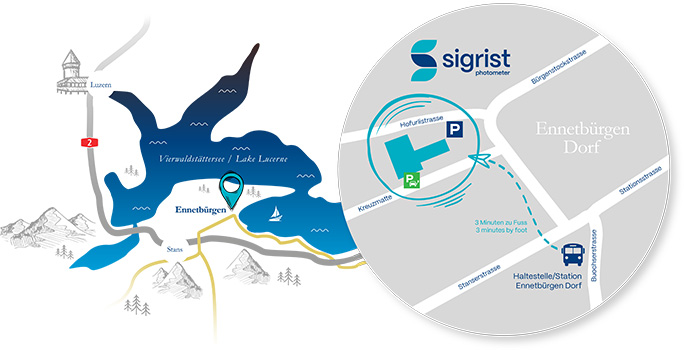One of the oldest applications of process photometry is the monitoring of the soot content in stack gas to check the combustion system.
But the principle of transmission measurement applied (scatter coefficient) limits the use of these “opacimeters” to relatively high concentrations.

Fig. 15: Transmission measurement (opacity)
However, modern filtration equipment built to retain pollutants requires highly sensitive instruments to monitor the residual dust concentration. The principle of scattered light measurement provides much lower response thresholds than the transmitted light method. Detection of the light scattered sideways rather than the transmitted light can be done either right in the stack (in situ) or outside it (extractive). In the former case, the measurement point is located close to the stack wall, where flow patterns make the dust concentration unrepresentative of that over the entire stack cross-section. With the extractive method, the sample can be taken from the centre of the stack and will therefore be much more representative of the prevailing conditions.

Fig. 16: Scattered light measurement, in situ
Application of the in situ sampling method (transmission and scattered light) is restricted to dry gases. But the scrubbers frequently used these days to meet tight emission limits cool down the gases and saturate them with moisture. So the gases are full of tiny water droplets, which falsify the dust measurement. To correct this, the extractive method must be used. The sampling system is equipped with heaters that eliminate the water droplets by evaporation before measurement takes place. Isokinetic sample; Smoke spot number

Fig. 17: Extractive scattered light measurement with heating of the flue gas with stack (1), extraction (2), heater (3), photometer (4), fan (5) and recirculation (6)



